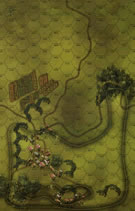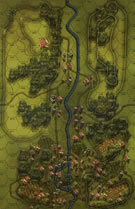|
Marne-Rhine Canal Polish Exiles #11 |
||
|---|---|---|
| (Defender) Germany | vs |
France
(Attacker)
Poland (Attacker) |
| Formations Involved | ||
|---|---|---|
| Germany |  |
268th Infantry Division |
| Poland |  |
1st Grenadier Division |

| Total | |
|---|---|
| Side 1 | 0 |
| Draw | 0 |
| Side 2 | 0 |
| Overall Rating, 0 votes |
|---|
|
0
|
| Scenario Rank: --- of 914 |
| Parent Game | Polish Exiles |
|---|---|
| Historicity | Historical |
| Date | 1940-06-17 |
| Start Time | 00:20 |
| Turn Count | 15 |
| Visibility | Night |
| Counters | 66 |
| Net Morale | 1 |
| Net Initiative | 2 |
| Maps | 2: 27, 30 |
| Layout Dimensions | 56 x 43 cm 22 x 17 in |
| Play Bounty | 232 |
| AAR Bounty | 227 |
| Total Plays | 0 |
| Total AARs | 0 |
| Battle Types |
|---|
| Bridge Control |
| Inflict Enemy Casualties |
| Urban Assault |
| Conditions |
|---|
| Minefields |
| Off-board Artillery |
| Scenario Requirements & Playability | |
|---|---|
| Deluge | Counters |
| Fall of France 2 | Maps + Counters |
| Polish Exiles | Base Game |
| Introduction |
|---|
|
Lagarde, France In the morning, the Germans pushed through the remnants of Polish units around Dieuze, eliminating almost an entire Polish battalion, and reached the Marne-Rhine canal at around 1000. At midday, the first assault troops from the 488th Infantry Regiment entered the canal-side village of Lagarde, joined an hour later by motorized elements of the 499th Infantry Regiment. The German 268th Infantry Division's objective, to conquer a passage over the canal, had almost been achieved. But Polish sappers blew up the Lagarde bridge, although the structure's remains still allowed infantry to pass. German pioneers could reinforce the structure, but not while Lagarde remained under Polish artillery fire. The Polish grenadiers on the south bank of the canal awaited the opportunity to decimate any reckless German crossing. Lacking artillery support, the Germans pushed the 499th Regiment's I Battalion across the bridge, toward Vaucourt, in the direction of the Bois du Tilleul. The Poles retreated, but then rallied, gathering all available troops and counterattacking. The Germans suffered heavy losses under Polish artillery fire and themselves retreated toward the canal, despite an attempted reinforcement by the regiment's II Battalion. By late afternoon, the Germans only had a small bridgehead across the canal. At dusk, the Poles counter-attacked. |
| Conclusion |
|---|
|
Col. Wladyslaw Zietkiewicz of the 2nd Grenadier Regiment led the Polish counter-attack to eliminate the German bridgehead, starting at 2045. Duch, the division commander, had assembled a reserve including the divisional reconnaissance unit, the remnants of the 1st Grenadier Regiment (about 200 men) and the Chodzko Corps Franc. The French 20th Tank Battalion offered 25 R35 light tanks to support the attack, but the commanders of the two armored companies were reluctant to take part. Galvanized by the strength of the Polish artillery and the presence of Zietkiewicz at their head, The Polish Grenadiers attacked the German bridgehead with a howl, forcing a rapid retreat. The shooting ceased around midnight, and the Poles claimed that the bridgehead had been completely recaptured, which the Germans disputed. According to the German division's chief of staff, "a small pocket remained in our hands south of the canal." The charismatic Zietkiewicz would be murdered by Germans on the 21st. |
| Additional Notes |
|---|
|
Use French DRG, GrFr, and 25mm AT counters to represent equivalent Polish units. |
| AFV Rules Pertaining to this Scenario's Order of Battle |
|---|
|
| 1 Errata Item | |
|---|---|

|
The reduced direct fire value of the Heer HMG became 5-5 starting with Fall of France. (plloyd1010
on 2015 Jul 31)
|

 PoEx010
PoEx010 





























